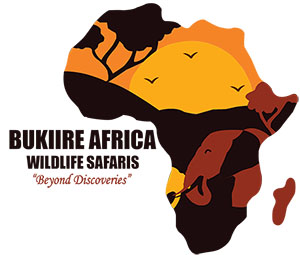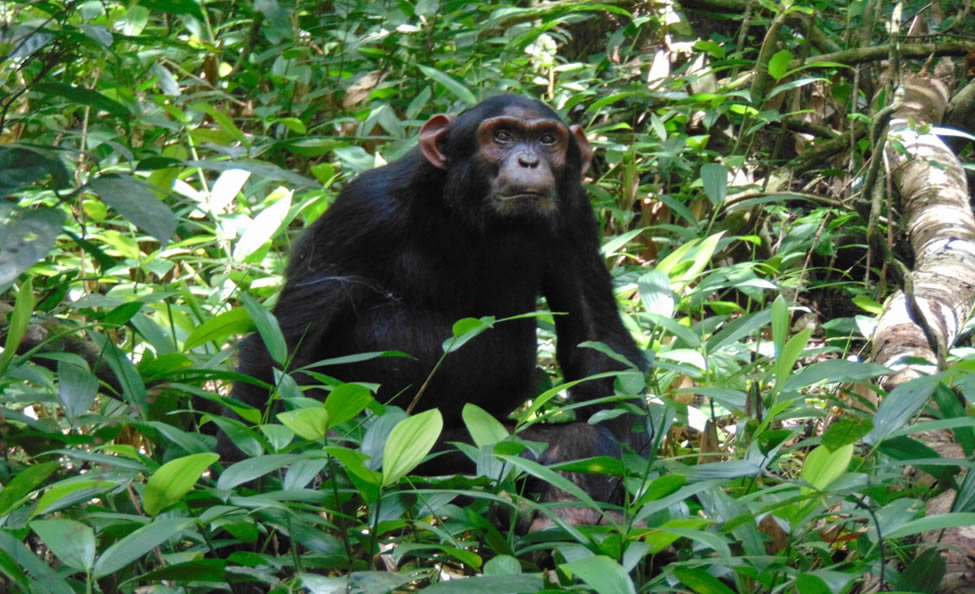Located in South Western part of Uganda, nestled beneath Mount Rwenzori in the Albertine Rift Valley, lies Kibale National Park. It is roughly 17 kilometers from fort portal city and an estimate of 28 kilometers from Kamwenge town, as the nearest towns to the Park. The drive from Entebbe International Airport or Kampala city to the Park is estimated to take 5-6 hours along Kampala-Fort Portal road via Mubende district.
Endowed with 13 primate species, among which are the Chimpanzees that carry the most interest to the visitors in the Park. The Park inhabits a population of over 1500 individuals, for which some are habituated and others, wild. A community of 150 members is habituated for tracking as other groups are under research for habituation.
The size of the Park is estimated to cover 795 kilometers squared with an interconnected corridor to Queen Elizabeth National Park which permits free movement of animals from one park to the other. It is largely covered with both Montane and Low land forests hence contributing to the diversity of wildlife inhabiting in the park. It is home to over 350 bird species among which are endemic birds like the green breasted Pitta, Dusky Crimsonwing, Masked Apalis and others. Animals like forest Elephants and Leopards, different species of snakes are all residents in the park.
What to do when in Kibale National Park
Chimpanzee Tracking
Kibale National Park is famously known for its highest population of chimpanzees in the World hence the nickname “Primate Capital of the World”. The activity is conducted in Kanyanchu where the visitor’s Information Centre is located. This is along Fort Portal-Kamwenge road, 17 kilometers from Fort Portal and roughly 7 kilometers while driving through the forest from the boundaries of the park. Tracking resumes at exactly 8:00 AM with briefing before heading to the forest and estimated to last for 2-4 hours depending on how far or close the chimps are sighted. Chimpanzee viewing lasts for only an hour. Chances are always high to see our distant cousins that we share 98% DNA. Chimpanzees can be sighted either in the trees feeding or on ground.
Preparation
Make sure your permits were purchased before the tracking day so as to avoid inconveniences. With you, carry a face mask which you will have to wear when you get to the chimpanzees, enough water for drinking, packed lunch in case the lodge you are residing is a distance away and insect repellant. This therefore calls for a backpack to carry your necessities. Nature blending colors are recommended during the activity and endeavor to wear trousers, long sleeved shirts or blouse, a hut and closed shoes. The terrain is relatively flat, however you are advised to wear hiking boots to avoid slipping and bites from unknown bugs.
Forest Night Walks
Guided Forest Night walks are conducted from Kanyanchu visitor’s information Centre. They resume at exactly 7:00 PM. The activity is meant to disclose the unique lifestyle of nocturnal wildlife. Such animals are the Bush babies, Pottos and Tree Hyrax among others. Animals like Forest Elephants, Buffaloes, and Leopards can also be sighted on a lucky day. The ambiance of the forest during the night, creates a unique experience as you listen to different sounds of nature for which some, you may be unable to see. The activity is always guided by an armed ranger. You are advised to carry a flash light, apply insect repellent, wear trousers, long sleeved shirts or blouse and closed shoes. It takes 1-2 hours.
Chimpanzee Habituation experience
Participate in habituating wild Chimpanzees. Before Chimpanzees are ready for tracking, they undergo a process of familiarization with human for 4-6 years. It is therefore an experience of its kind to join the researchers for half a day or even more and witness how habituation is conducted. The activity resumes earlier at 6:30 AM and ends late between 12 and 2 PM.
Bird Watching
Kibale National Park is a bird Haven for bird watchers. It is estimated to harbor over 350 bird species. Forest birds like the Black bee eater, Green breasted Pitta and Nahan’s Patridge among other endemics, are residents. There are 6 Albertine endemic bird species in the Park, making it a must visit for bird watchers. The thick canopy of the forest provides shade for bird watching throughout the day. However, some shy birds like the Green breasted Pitta, require an early start to have better chances of sighting. Ranger Bird Guides are always available at Kanyanchu visitor’s information Centre to enhance chances of watching more.



